Squatting is one of the primary human movement pattern. Squat as such is a closed chain kinetic chain movement, which has a direct transfer to various sporting movements, as well as movements in our everyday life. Weighted squats are majorly used in strength & conditioning in various sports, gyms etc. as a basic exercise.
Front and back squats are the two squatting movements being used in the weight room, apart from various other squatting variations. The basic difference is that in the front squat, the bar is positioned across the collarbones, in front of the body, whereas in the back squat, the bar is placed on your upper back region.
- Among the very first studies to compare front and back squat was the 1989 study, which compared the knee extensor demands and low back injury risks of the front and back squat exercises. Eight highly strength-trained college-aged males, performed each type of squat (Load = 75% of front squat 1RM).
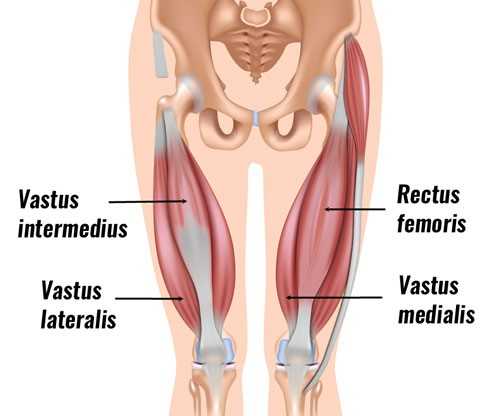
(when we talk about the knee extensor muscles, the one muscle which extends the knee is the quadriceps muscle. The quadriceps femoris muscle group (rectus femoris, vastus lateralis, vastus medius, and vastus intermedius) crosses the knee via the patella and acts to extend the leg. The hamstring group muscles (semitendinosus, semimembranosus, and biceps femoris) flex the knee and extend the hip.)
The knee extensor comparison indicated similar knee extensor demands, so either squat exercise could be used to develop knee extensor strength.
- A 2007 study compared front and back squats. Researchers evaluated 10 sportsmen familiarized with the execution of the 2 variants of the exercise, which do not present previous injuries of knees or lumbar spine. The load in the exercises is calculated on the basis of 50% of a maximum repetition (1 RM) of back squat, in both exercises.
It was observed in the knee a better development of energy with the front bar, allowing a better muscular exercise with the same load. The mean power absorbed by the hip with the back bar is considerably greater. This basically would be related to fact that the exercise is done faster due to the greater stability obtained in locating the bar backwards.
- A 2007 study, compared the effects of the front squat and back squat on vertical jump and lower body power of male volleyball players. Eighteen male volleyball players volunteered for this study and were assigned either to a back squat or a front squat training program group. Subjects followed the training program for 8 weeks.
It was seen that, both front squat and back squat strength training programs were both equally effective at enhancing vertical jump performance, and no significant difference was seen.
- A 2008 study, investigated the effects of performing heavy back squats (HBS) and heavy front squats (HFS) on the average speed during each 10m interval of 40m sprint trials. 10 strength trained men performed a HBS, HFS, or control treatment before performing three 40-m sprint trials separated by 3 minutes.
The HBS and HFS treatments consisted of performing parallel back or front squats with 30%, 50%, and 70% of the subject’s 1 repetition maximum after 5 minutes of cycling. The control treatment consisted of cycling for 5 minutes. The sprint trials were performed 4 minutes after completing the HBS, HFS, or control treatments.
Significant increases in speed were found during the 10- to 20m interval for the HBS compared with the control treatment. During the 30- to 40m interval, HBS produced significantly greater speeds compared with the HFS treatment and the control treatment.
- Acc. to a 2009 study, the purpose of the squat is to train the muscles around the knees and hip joints, as well as to develop strength in the lower back, for execution of basic skills required in many sporting events and activities of daily living. Because most activities of daily living require the coordinated contraction of several muscle groups at once, and squatting (a multi-joint movement) is one of the few strength training exercises that is able to effectively recruit multiple muscle groups in a single movement, squats are considered one of the most functional and efficient weight-bearing exercises whether an individual’s goals are sport specific or are for an increased quality of life.
Two forms of the squat are the back squat and the front squat. Athletes and persons concerned with fitness regularly perform the back squat; the front squat is performed much less often. Although both squats effectively work the lower back, hip, and leg muscles, there are slight variations in technique and muscular involvement. In addition, the maximum amount of weight an individual can lift varies between the two techniques, with increased capacity possible for the back squat.
Researchers compared the back and front squats biomechanics in fifteen healthy trained individuals. More specifically, each participant met our stringent requirement of at least 1 year of experience in both lifts used a minimum of one time per week each in their regular weight training programs.
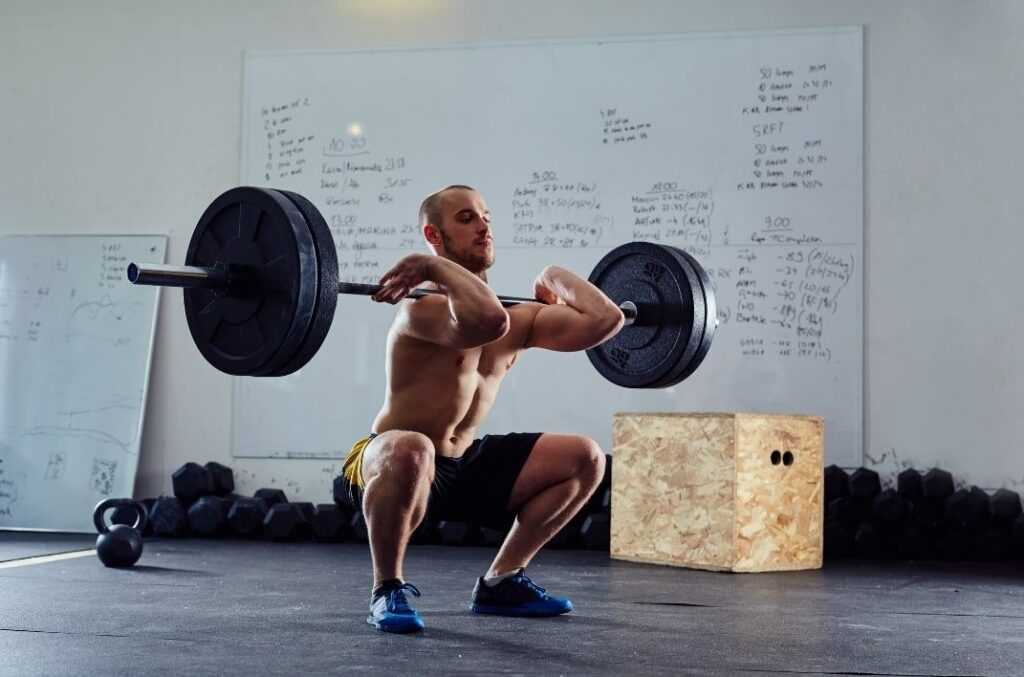
They saw that, the back squat resulted in significantly higher compressive forces and knee extensor moments than the front squat. Although bar position did not influence muscle activity, muscle activation during the ascending phase was significantly greater than during the descending phase. The front squat was as effective as the back squat in terms of overall muscle recruitment, with significantly less compressive forces and extensor moments.
The results suggest that front squats may be advantageous compared with back squats for individuals with knee problems such as meniscus tears, and for long-term joint health.
- A 2011 study, examined the differences in trunk and lower limb kinematics between the front and back squat. They found that, while performing the back-squat action, the performer is required to adopt a flexed upper body position at the mid-point of the exercise in order to maintain balance. Conversely, the front squat allows for a more upright posture throughout.
Research has showed that increasing trunk lean (i.e.: trunk flexion away from a neutral upright position) may result in greater shear forces occurring at the lumbar spine, posing a considerable injury risk for this technique.
For the study, 12 participants, completed three repetitions of both front and back squat exercises at 50% of their back squat one repetitions maximum. Results showed that the back squat exhibited a significantly greater trunk lean than the front squat throughout with no differences occurring in knee joint kinematics.
The results of this study suggested that the back squat gives rise to an increased risk of lower back injury.
- A 2014 study, examined the lower body kinematic comparisons between front and back squat exercises in response to loads. Eight experienced male lifters participated in this study. Each participant performed four trials of back and front squat exercises at three different loads (65%, 75%, and 85% of 1 repetition maximum).
The results of the study showed that the back squat has a significant greater posterior trunk inclination angle, less knee flexion and higher lumbar spine angular velocity in comparison with the front squat. Since the participants were experienced weight lifters, they were not in a risk of injury in performing back squat up to 85% of 1RM even with greater trunk inclination angle because their lumbar spine angle did not change significantly, which showed that their lifting technique was not compromised.
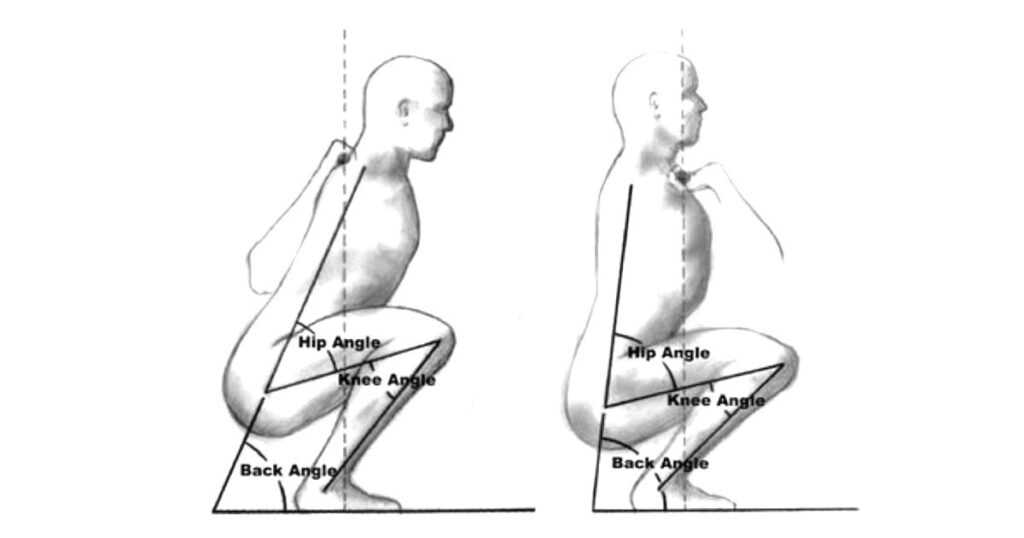
- A 2015 study, examined the influence of the front and back squat variations on the load experienced by the Achilles tendon. For the study, Achilles tendon loads were obtained from eighteen experienced male participants as they completed both back and front squats.
The results showed that the peak Achilles tendon load was significantly greater in the back-squat condition compared to the front squat.
This however, does not mean, the back squat is to be avoided due to risk of Achilles tendon injuries. This simply means, that those at the risk of developing injuries related to the Achilles tendon may reduce this risk through more frequent utilization of the front squat in their training.
- A 2015 study, compared the musculature activity and kinematics of knee and hip joints during front and back squat with maximal loading. EMG activities of vastus lateralis, vastus medialis, rectus femoris, semitendinosus, biceps femoris, gluteus maximus and erector spinae were measured while participants were completing front and back squat exercises with maximum loading.
Results showed that the EMG activity of vastus medialis was found to be greater in the front squat compared to the back squat during the ascending phase and the whole manoeuvre, while semitendinosus EMG activity was greater in the back squat during the ascending phase.
Compared to the front squat version, back squat exhibited significantly greater trunk lean, with no differences occurring in the knee joint kinematics throughout the movement.
Results suggested that the front squat may be preferred to the back squat for knee extensor development and for preventing possible lumbar injuries during maximum loading.
- Another 2015 study, compared the electromyography (EMG) amplitude of the upper gluteus maximus, lower gluteus maximus, biceps femoris, and vastus lateralis of front, full, and parallel squats. Thirteen women performed ten repetitions of their estimated 10-repetition maximum of each respective variation.
The researchers found no significant differences between full, front and parallel squats in any of the tested muscles. It is recommended that individuals utilize a full range of motion when squatting, assuming full range can be safely achieved, in order to promote more favourable training adaptations.
Furthermore, despite requiring lower loads, the front squat may provide a similar training stimulus to the back squat. Therefore, the front squat is a viable alternative to the back squat since muscle activation is similar between the two variations.
- In a 2016 study, compared the estimated forces developed by the primary skeletal muscles used in the front and back squat. 25 males were recruited, who had years of experience of lifting their 1RM load in squats. Participants completed both back and front squats at 70% of their front squat 1 repetition maximum.
The kinematic analysis showed that the back squat was associated with significantly greater flexion of the trunk. Examination of muscles forces indicated that erector spinae forces were also significantly larger in the back squat. No significant differences were identified for skeletal muscle forces elsewhere.
The results indicate that neither the front nor back squat provides any marked difference in muscle force production, aside from that isolated to the lower back. These findings lead the conclusion that neither the front nor back squat conditions confer any additional benefits over the other in terms of the skeletal muscle force output.
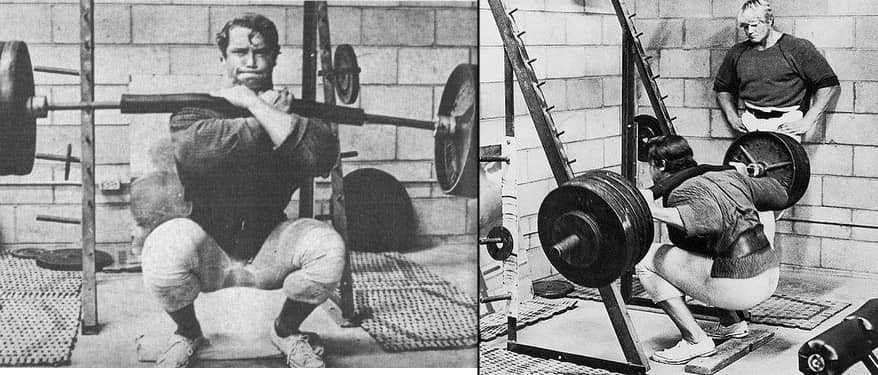
- A 2019 study, compared the effects of performing the back squat or front squat on sprint speed, vertical jump and squat strength. Both active males and females were separated into two groups based on initial 1-RM squat strength. One group performed the back squat and other group performed the front squat.
Researchers saw that, both the back squat and front squat significantly improved 1-RM squat, vertical jump and sprint time. Thus, both front squat and back squat resistance training programs improved lower body muscular strength, sprint speed, and power output.
THE FINAL CONCLUSION
When it comes to back and front squats, no one is superior to another. It depends on certain factors. Both squats make your muscles equally stronger for the same load. It will depend on your goal. For e.g. an Olympic weightlifter will need to practice a lot of front squats due to his sporting requirements, as the front squat component is used in clean & jerk, and snatch movements; and a powerlifter, will be focussing more on the back squat.
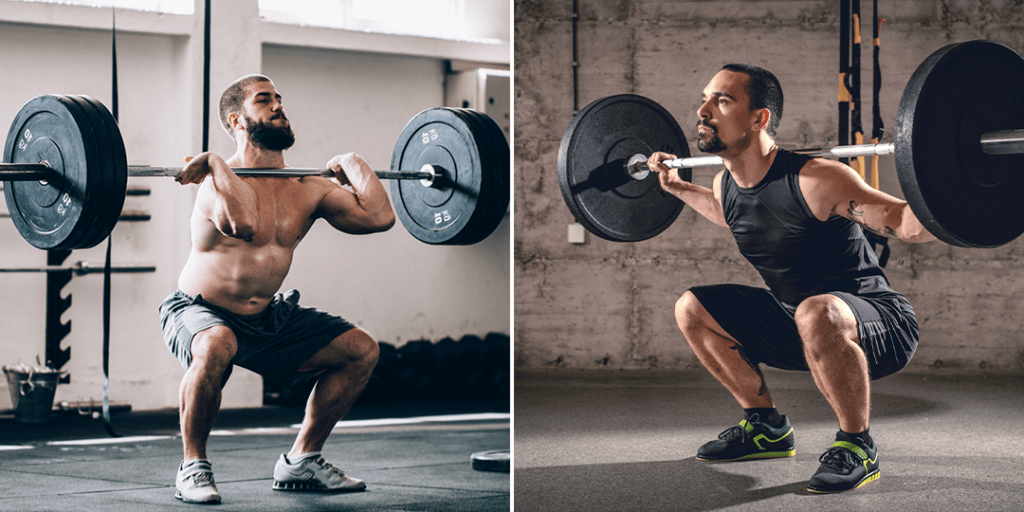
Here are summary points from all the above studies:
- Back squat is a more stable exercise, so the exercise can be done faster and with much greater loads than the front squats.
- Both front squat and back squat strength training programs are both equally effective at enhancing vertical jump performance, sprint speed, 1RM squat, muscular development & power output.
- The back-squat results in significantly higher compressive forces and forward trunk inclination than the front squat. erector spinae forces were also significantly larger in the back squat.
- The bar position does not influence muscle activity & muscle activation. The front squat is as effective as the back squat in terms of overall muscle recruitment, with significantly less compressive forces and extensor moments. The front squats may be advantageous compared with back squats for individuals with knee problems such as meniscus tears, and for long-term joint health.
- However, forward trunk inclination in heavy back squat may not be an issue in experienced lifters, as their lifting technique is not compromised. So, go slow and go progressive in weight lifted in back squat, learning the right technique.
- Achilles tendon load was seen to be significantly greater in the back-squat condition compared to the front squat. This however, does not mean, the back squat is to be avoided due to risk of Achilles tendon injuries. This simply means, that those at the risk of developing injuries related to the Achilles tendon may reduce this risk through more frequent utilization of the front squat in their training.
- It is recommended that individuals utilize a full range of motion when squatting, assuming full range can be safely achieved, in order to promote more favourable training adaptations. Furthermore, despite requiring lower loads, the front squat may provide a similar training stimulus to the back squat. Therefore, the front squat is a viable alternative to the back squat since muscle activation is similar between the two variations.
- Neither the front nor back squat conditions confer any additional benefits over the other in terms of the skeletal muscle force output.
There are other common differences observed in front vs back squat:
- Back squat requires shoulder mobility and flexibility, as when the bar is kept on the traps or upper back, the shoulders are abducted and externally rotated. For someone with tight shoulders, and specially with shoulder injuries, back squat may be an issue, especially if the load is heavier. A front squat would be a better option then.
- In front squat, the problem occurs if you are having issue like shoulder impingement. The front squat puts the elbows in full flexion and the wrists in full extension. So, some people may not be comfortable with front squats, specially going heavy on them.

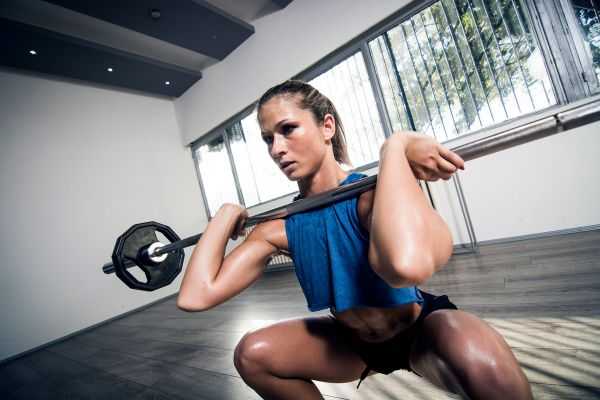




Muchas gracias. ?Como puedo iniciar sesion?